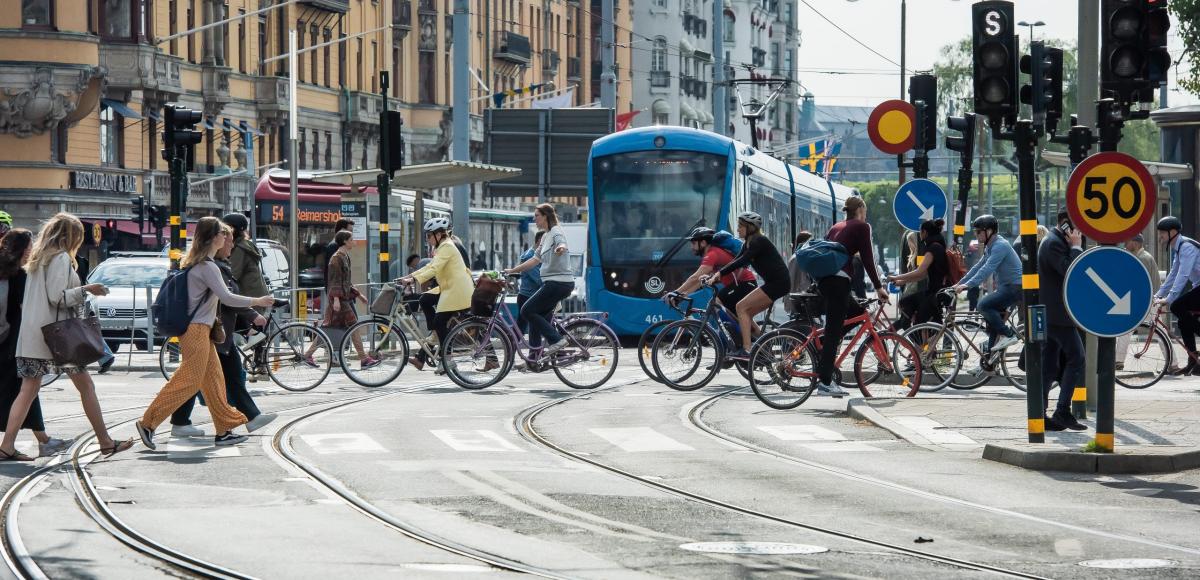
The Future of Mobility: Building Climate Neutral Cities
The way we move around our cities has a major impact on our environment. As urbanisation continues to increase, mobility solutions need to evolve to meet the demands of a more sustainable future.
In this article, we explore the role of mobility in creating climate-neutral cities and highlight some innovative solutions that are already making a difference.
Mobility is a fundamental component of urban life and a key driver of economic growth and development. However, the transport sector is also responsible for a significant proportion of greenhouse gas emissions, accounting for approximately 23% of global energy-related emissions. As cities continue to grow and develop, the challenge of reducing the environmental impact of urban transport becomes increasingly urgent.
The good news is that there are many promising developments in the field of sustainable mobility that can help cities achieve climate neutrality. Effective traffic planning, electrification of the transport sector, and seamless mobility solutions are essential components of any sustainable transport strategy. Cities need to focus on reducing car dependency and encouraging the use of public transport, cycling, and walking.

The Impact of Mobility on Climate Change
According to the World Economic Forum, a shift to more sustainable modes of transport could reduce urban transport emissions by up to 95% by 2050. To achieve this, cities need to invest in public transport infrastructure and make it more attractive to use than cars. This could include measures such as expanding and improving bus, tram and metro networks, introducing bike lanes and bike-sharing schemes, and implementing pedestrian-friendly streetscapes.
“As we work towards a climate-neutral future, effective traffic planning and electrification of the transport sector are crucial. Let's prioritize the environment and create innovative, sustainable mobility solutions that improve quality of life for urban residents.” – Marcel Winter
One promising example of innovative public transport infrastructure is found in Helsinki, Finland. The city's "mobility as a service" (MaaS) platform integrates public transport, car-sharing, bike-sharing, and taxi services into a single app, making it easy for residents to plan and pay for their journeys. The MaaS system has been so successful that other cities around the world, including Berlin and Tokyo, are now following suit.
Reducing Emissions by Electrification of the Transport Sector
In addition to public transport, the electrification of the transport sector is a critical component of sustainable mobility. Electric vehicles emit significantly less greenhouse gas emissions than traditional petrol and diesel vehicles, making them an essential tool in the fight against climate change. The International Energy Agency estimates that by 2030, there could be up to 130 million electric vehicles on the road, up from just over 3 million in 2017.
“The electrification of transport is the largest infrastructure project of our time. AFRY is your reliable partner from strategy definition and funding through planning all the way to implementation of charging infrastructure and decarbonised fleets.” - Steffen Schaefer, Head of Future Cities and Mobility
To facilitate this transition, cities need to invest in charging infrastructure and provide incentives for residents to switch to electric vehicles. These could include free parking and charging, and access to HOV lanes.

Finally, seamless mobility solutions are essential for creating a sustainable transport system that works for all. This means integrating different modes of transport to create a seamless, efficient, and sustainable network. For example, a resident may use a bike to reach a bus stop, then take a bus to a train station, and finally complete their journey with a shared electric car. By integrating these different modes of transport into a single system, cities can reduce congestion, lower emissions, improve the overall quality of life and the experience of the journey for residents.
In conclusion, mobility is a critical component of creating climate-neutral cities that are liveable and sustainable. Effective traffic planning, electrification of the transport sector, and seamless mobility solutions are all essential components of a sustainable transport strategy.

Future Cities insights centre
Sources:
International Energy Agency. (2020). Global EV Outlook 2020.
International Transport Forum. (2019). Transport CO2 and the Paris Agreement: Tracking Transport’s Climate Contribution in 2019.
National Renewable Energy Laboratory. (2020). Electrification Futures Study: End-Use Electric Technology Cost and Performance Projections Through 2050.
United Nations Environment Programme. (2021). Making Peace with Nature: A Scientific Blueprint to Tackle the Climate, Biodiversity and Pollution Emergencies.
European Commission. (2021). A Renovation Wave for Europe - Greening our Buildings, Creating Jobs, Improving Lives.
European Cyclists' Federation. (2021). Cycling Barometer 2021.
Transportation Research Board. (2010). Driving and the Built Environment: The Effects of Compact Development on Motorized Travel, Energy Use, and CO2 Emissions.
European Commission. (2020). Sustainable and Smart Mobility Strategy.
European Environment Agency. (2021). Monitoring CO2 emissions from new passenger cars and vans in 2020.
European Environment Agency. (2020). Air quality in Europe — 2019 report.



